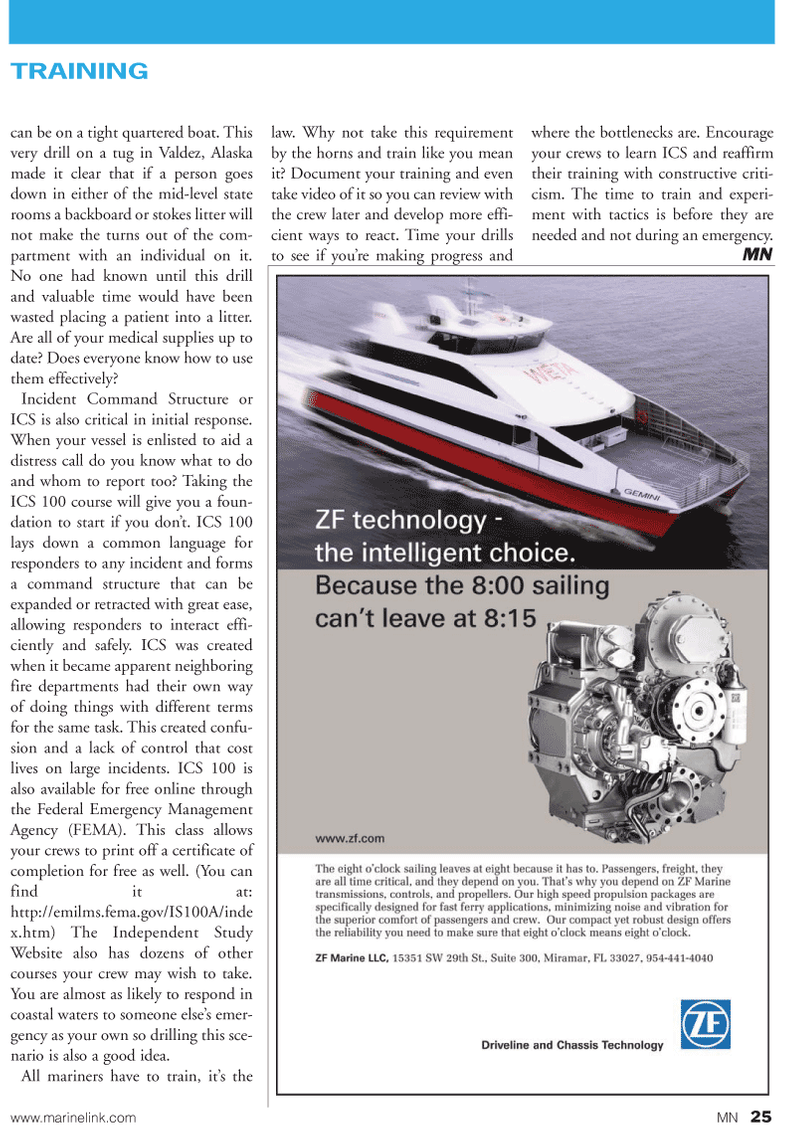
Page 25: of Marine News Magazine (November 2010)
Workboat Annual
Read this page in Pdf, Flash or Html5 edition of November 2010 Marine News Magazine
www.marinelink.com MN 25
TRAINING can be on a tight quartered boat. This very drill on a tug in Valdez, Alaska made it clear that if a person goes down in either of the mid-level state rooms a backboard or stokes litter will not make the turns out of the com- partment with an individual on it.
No one had known until this drill and valuable time would have been wasted placing a patient into a litter.
Are all of your medical supplies up to date? Does everyone know how to use them effectively?
Incident Command Structure or
ICS is also critical in initial response.
When your vessel is enlisted to aid a distress call do you know what to do and whom to report too? Taking the
ICS 100 course will give you a foun- dation to start if you don’t. ICS 100 lays down a common language for responders to any incident and forms a command structure that can be expanded or retracted with great ease, allowing responders to interact effi- ciently and safely. ICS was created when it became apparent neighboring fire departments had their own way of doing things with different terms for the same task. This created confu- sion and a lack of control that cost lives on large incidents. ICS 100 is also available for free online through the Federal Emergency Management
Agency (FEMA). This class allows your crews to print off a certificate of completion for free as well. (You can find it at: http://emilms.fema.gov/IS100A/inde x.htm) The Independent Study
Website also has dozens of other courses your crew may wish to take.
You are almost as likely to respond in coastal waters to someone else’s emer- gency as your own so drilling this sce- nario is also a good idea.
All mariners have to train, it’s the law. Why not take this requirement by the horns and train like you mean it? Document your training and even take video of it so you can review with the crew later and develop more effi- cient ways to react. Time your drills to see if you’re making progress and where the bottlenecks are. Encourage your crews to learn ICS and reaffirm their training with constructive criti- cism. The time to train and experi- ment with tactics is before they are needed and not during an emergency.
MN

 24
24

 26
26
